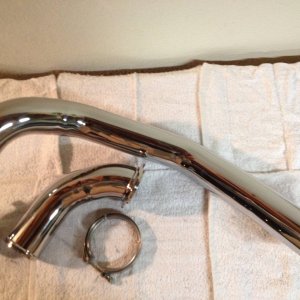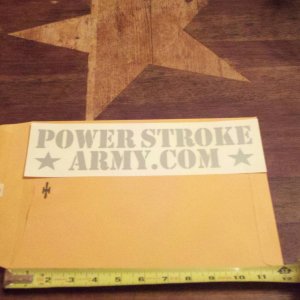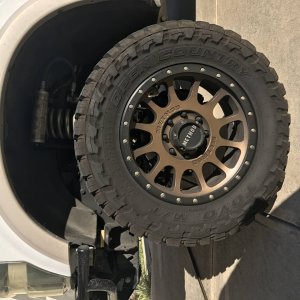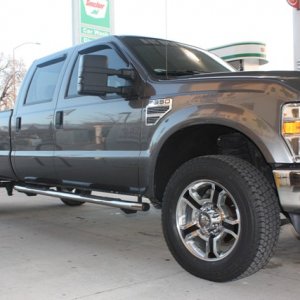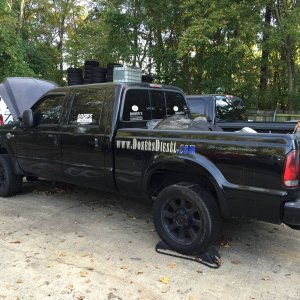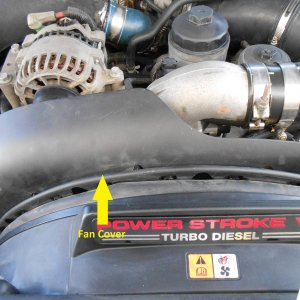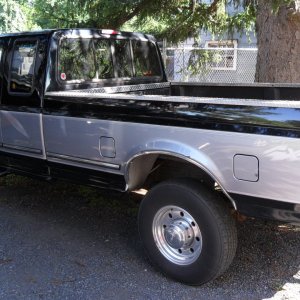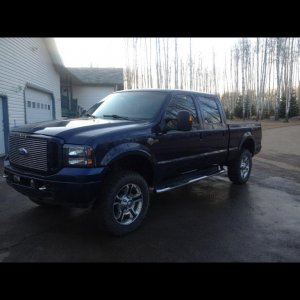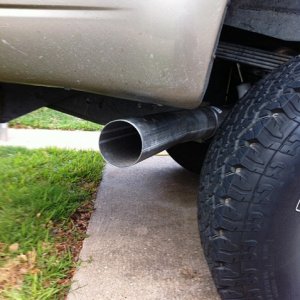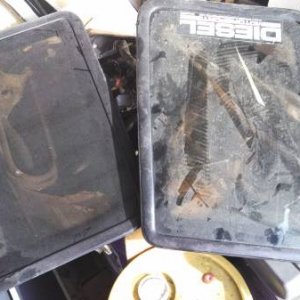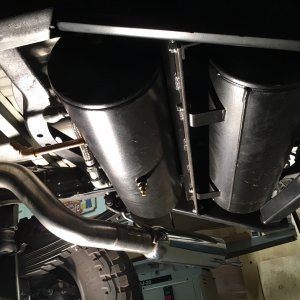jdgleason
Active member
A few months ago, there was a lot of debate on bigger nozzles going on. Several guys said bigger nozzle, less PW (to a point) will make more power and net lower egt's. I can see how that may work with an adequate fuel system, but we saw where a lot of guys were going to 30% nozzles on stock fuel and claiming the truck made more power, but we never saw any numbers.
So Tadd poked me about it for a while and we decided that we should test this theory out. I talked with Matt at Gearhead and he was all about giving us a hand testing these out. He was a HUGE help, and we couldn't have done it without his help. We used Elite's 60hp or 15% nozzles on my bone stock fuel system. We made the before dyno run on a Thursday, I swapped the nozzles on Saturday, and we dyno'd again Monday night.
Truck mods:
Intake, Exhaust, Gearhead tuned, Elite Diesel 72mm atmosphere.
The Before:
Another big thanks to Mike Haller for letting me waste time on his dyno while we did the testing. The before test we used the tune that I have always run from Matt. A pretty standard Race tune that used 2.18 pulsewidth. I always held rail pressure just fine and the truck made great power. Mike made 3 pulls, and we took the best pull of the day as our baseline. It was 664.70.
Over the weekend I swapped the nozzles with Elite's 60's. I replaced all of the injector lines and washers on the injectors as well (In case anyone asks). Finished the truck up Saturday evening and drove it a bit. The first thing I noticed was that the truck had a lot more low end. Throttle response was better and the chargers lit noticeably quicker than they did before. The truck did smoke a bit more, and it felt to me (seat of the pants) as if top end had suffered a bit. At this point I was super anxious to get it on the dyno to see what the graphs looked like.
The After:
Early Monday, Matt sent me a couple of different files to try that he wrote for the nozzles. Remember, we are comparing numbers against the baseline 664hp.
We started out in the 2.18 tune that I originally had. The truck lost rail pressure down to 23,000psi or so, and dropped about 35hp. We loaded the first nozzle file which was a 2.08 pulsewidth, and The truck maintained about 24,000 but was still down between 25 and 30 horsepower. The next file we tried was a 2.0 pulsewidth that maintained fully, however the truck still lost 22hp.
Things were not looking very promising for us, but Mike and I weren't satisfied with the results. So I called Matt around 8pm and we chatted about our findings and he wanted to send us a few more tunes to try. He sent some bigger pulsewidth tunes (2.25) and some smaller ones as well and numbers ranged from 615-630. Matt sent us several tunes with several tweaks until well after 10pm when we decided that the truck was not going to make any more power with those nozzles. It seemed that the stock fuel system couldn't keep rail pressure and atomization high enough with the 60's to keep power where stock nozzles were.
The results:
The 2.0 pulsewidth tune made the best power after the nozzle swap, so that is what we stuck with. The truck lost a total of 22.4 peak hp. It is obvious that it comes on stronger down low, but the top end definitely suffered. The graph shows that pretty clearly. Smoke was up a bit but that was probably due to losing some atomization. EGT's cruising dropped 25* or so, and WOT EGT's did drop a bit more than that (50-75*).
Here is the graph:

Here are some pictures from the nozzle swap itself.




This isn't a video of the before pull, but you get an idea of how the fuel cleaned up with stock nozzles.
http://www.youtube.com/watch?v=9XoySSHPaco
And here is a video of the after dyno with the 2.0 Pulsewidth
http://www.youtube.com/watch?v=XgDC5hWq5HI
So Tadd poked me about it for a while and we decided that we should test this theory out. I talked with Matt at Gearhead and he was all about giving us a hand testing these out. He was a HUGE help, and we couldn't have done it without his help. We used Elite's 60hp or 15% nozzles on my bone stock fuel system. We made the before dyno run on a Thursday, I swapped the nozzles on Saturday, and we dyno'd again Monday night.
Truck mods:
Intake, Exhaust, Gearhead tuned, Elite Diesel 72mm atmosphere.
The Before:
Another big thanks to Mike Haller for letting me waste time on his dyno while we did the testing. The before test we used the tune that I have always run from Matt. A pretty standard Race tune that used 2.18 pulsewidth. I always held rail pressure just fine and the truck made great power. Mike made 3 pulls, and we took the best pull of the day as our baseline. It was 664.70.
Over the weekend I swapped the nozzles with Elite's 60's. I replaced all of the injector lines and washers on the injectors as well (In case anyone asks). Finished the truck up Saturday evening and drove it a bit. The first thing I noticed was that the truck had a lot more low end. Throttle response was better and the chargers lit noticeably quicker than they did before. The truck did smoke a bit more, and it felt to me (seat of the pants) as if top end had suffered a bit. At this point I was super anxious to get it on the dyno to see what the graphs looked like.
The After:
Early Monday, Matt sent me a couple of different files to try that he wrote for the nozzles. Remember, we are comparing numbers against the baseline 664hp.
We started out in the 2.18 tune that I originally had. The truck lost rail pressure down to 23,000psi or so, and dropped about 35hp. We loaded the first nozzle file which was a 2.08 pulsewidth, and The truck maintained about 24,000 but was still down between 25 and 30 horsepower. The next file we tried was a 2.0 pulsewidth that maintained fully, however the truck still lost 22hp.
Things were not looking very promising for us, but Mike and I weren't satisfied with the results. So I called Matt around 8pm and we chatted about our findings and he wanted to send us a few more tunes to try. He sent some bigger pulsewidth tunes (2.25) and some smaller ones as well and numbers ranged from 615-630. Matt sent us several tunes with several tweaks until well after 10pm when we decided that the truck was not going to make any more power with those nozzles. It seemed that the stock fuel system couldn't keep rail pressure and atomization high enough with the 60's to keep power where stock nozzles were.
The results:
The 2.0 pulsewidth tune made the best power after the nozzle swap, so that is what we stuck with. The truck lost a total of 22.4 peak hp. It is obvious that it comes on stronger down low, but the top end definitely suffered. The graph shows that pretty clearly. Smoke was up a bit but that was probably due to losing some atomization. EGT's cruising dropped 25* or so, and WOT EGT's did drop a bit more than that (50-75*).
Here is the graph:
Here are some pictures from the nozzle swap itself.
This isn't a video of the before pull, but you get an idea of how the fuel cleaned up with stock nozzles.
http://www.youtube.com/watch?v=9XoySSHPaco
And here is a video of the after dyno with the 2.0 Pulsewidth
http://www.youtube.com/watch?v=XgDC5hWq5HI

